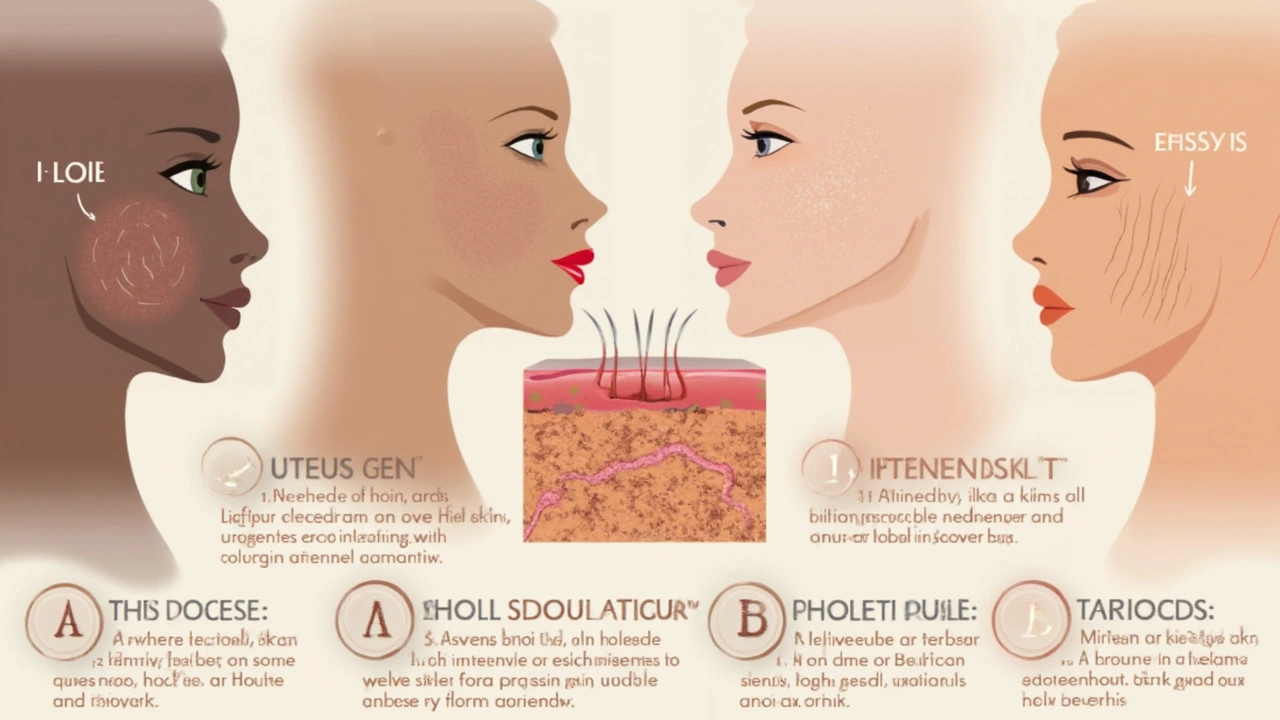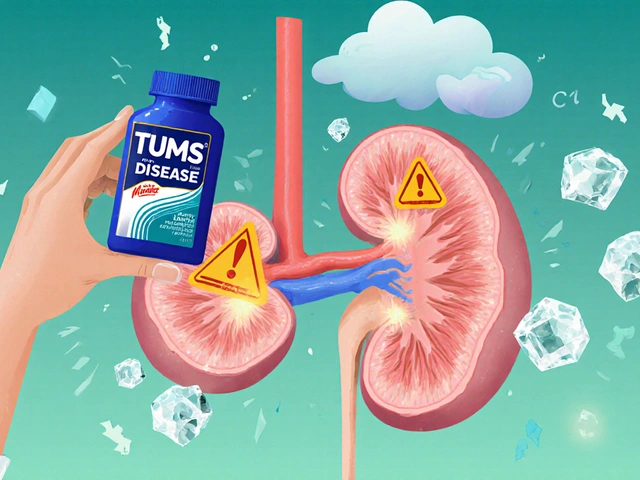Ever looked in the mirror and spotted those random patches where your skin just doesn’t match up? That blotchy, spotty look—sometimes pinkish, sometimes brownish—is what doctors call mottled skin discoloration. For a lot of people, this isn’t just stubborn; it feels almost impossible to fade with regular creams.
Here’s where microneedling steps in. This isn’t about fancy lasers or masks you slap on at home. Microneedling works differently—instead of sitting on the surface, it triggers your skin to repair itself by making tiny, controlled pokes. Sounds intense, right? But those little needles wake up your skin’s “fix-it” mode, and that goes a long way when you’re dealing with uneven patchy color.
If you’re tired of cover-up routines or if store-bought lotions aren’t cutting it, stick around. We’re about to get into why microneedling keeps gaining followers—including some you probably know online—and what you need to know if you’re considering trying it out.
- What Causes Mottled Skin Discoloration?
- How Microneedling Works
- Why Choose Microneedling Over Other Treatments?
- Tips to Maximize Results (and Avoid Mistakes)
- What to Expect Before, During, and After Microneedling
What Causes Mottled Skin Discoloration?
So, what’s actually behind those patchy spots that make your skin tone look all over the place? Mottled skin discoloration shows up when your skin’s pigment is out of sync—some areas end up darker or lighter than the rest. This isn’t a random thing. Usually, there are a handful of common triggers:
- Sun damage: Ultraviolet rays can mess with your skin’s pigment, creating spots that don’t fade easily.
- Hormonal shifts: Think pregnancy, birth control, or menopause. Hormones can throw your skin’s pigment-producing cells into chaos, leading to splotchy color.
- Aging: As you rack up birthdays, your skin does weird stuff—including losing its even tone.
- Certain health conditions: Things like lupus, rosacea, and vascular issues can also change the way your skin looks, creating mottled patterns.
- Medications: Some drugs, especially when combined with sun, up your risk for uneven skin color.
A lot of people notice these changes popping up on their cheeks, arms, or chest—especially if they’ve had years of sun exposure. Mottling doesn’t just hit folks with fair skin, either. Anybody can get it, though the patchiness might show up differently depending on your natural skin tone.
Check out this quick rundown of some triggers and where they usually show up:
| Trigger | Common Areas |
|---|---|
| Sun Damage | Face, hands, chest |
| Hormones | Cheeks, jawline |
| Health Conditions | Legs, arms, face |
Knowing what started your mottled skin discoloration helps you figure out how to tackle it—and why treatments like microneedling can make a difference where ordinary creams can't.
How Microneedling Works
Okay, so what actually happens during a microneedling session? A device with super tiny needles gets gently rolled or stamped over your skin. These needles don’t just scratch the surface—they go deep enough to create what the pros call ‘micro-injuries’ (no, you won’t see blood dripping down your face). The body’s natural response is to heal those micro-injuries by sending in fresh collagen and elastin—the good stuff that keeps skin smooth and even-toned.
When it comes to mottled skin discoloration, this process can seriously help by speeding up the renewal of new skin cells. Old, patchy skin is pushed out, and more balanced skin tone comes in. Even for stubborn dark spots, microneedling kicks your body into repair mode, breaking up clusters of pigment and making them fade faster than pretty much any lotion out there.
People sometimes ask if it hurts. Honestly, it’s not a spa day, but it’s not as scary as it sounds. You usually get numbing cream, so you just feel a weird buzzing or scratching, not real pain. Treatments usually take 30–45 minutes, and you’ll walk out a bit red—like a sunburn that calms down in a couple of days.
Here’s a quick breakdown of what’s going on, step by step:
- Numbing cream goes on about 20–30 minutes before starting.
- A specialist runs the microneedling device across the trouble spots.
- Your skin triggers repair responses, including collagen and new cell growth.
- Old, discolored skin sheds as your natural healing does its thing.
If stats are your thing, a credible 2022 study found that up to 80% of people with patchy pigment saw clearer skin after three microneedling sessions spaced a month apart. That’s without lasers or strong chemical peels.
| Microneedling Fact | Detail |
|---|---|
| Needle Depth Used | Usually 0.5–2.5 mm for skin discoloration |
| Average Recovery Time | 2–4 days of redness |
| Improvement Timeline | Best results after 3–6 sessions |
By waking up your own healing power, microneedling gives your skin a fresh reset—not just masking the problem, but actually reworking how your skin cells behave.

Why Choose Microneedling Over Other Treatments?
So why give microneedling a shot instead of sticking with peels, lasers, or bleaching creams? Here's what sets it apart—especially when you’re dealing with mottled skin discoloration that won’t budge.
With peels and strong topical treatments, you’re mostly working on the surface. Sometimes they lighten dark spots, but they can also cause irritation or even make discoloration worse if you go too strong—especially on sensitive skin or darker complexions. Lasers? Sure, they can be powerful, but they’re pricey, a bit intimidating, and not always safe for all skin tones.
Microneedling goes deeper than creams but skips the harshness of strong lasers and acids. It “tricks” your skin into making more collagen—the building-block protein that holds your skin together and fades discoloration from the inside out. What’s wild is that this treatment also helps your skin absorb the stuff you put on it after—vitamin C serum, brightening creams—they actually get into the skin better, so you see more results from products you’re probably already buying.
- Safer on all skin tones and types, especially compared to many lasers and peels.
- Minimal downtime. Most people are red for a day or two—not weeks.
- Lower risk of permanent marks or light spots.
- You get improvement in texture and pore size with the same treatment. It’s like a 2-for-1 deal.
Curious about how it stacks up? Here’s what’s typical after a session (done by a pro):
| Treatment | Downtime | Cost per session (avg.) | Safe for darker skin? |
|---|---|---|---|
| Microneedling | 1-3 days | $200-$700 | Yes |
| Chemical Peels | 5-14 days | $150-$500 | Not always |
| Lasers | 5-14 days | $400-$1500 | Varies |
If you’re looking for something trustworthy, that works underneath the surface, and isn’t likely to make things worse, microneedling actually hits a sweet spot. It’s not magic, but it is a serious upgrade from fading creams sitting in your bathroom cabinet.
Tips to Maximize Results (and Avoid Mistakes)
If you’re choosing microneedling for mottled skin discoloration, it’s not just about booking a session and hoping for miracles. Doing it right is everything. Plenty of people miss key steps and end up underwhelmed or, worse, with irritated skin. Here’s how to get your money’s worth and see actual improvements.
- Pick a reputable provider. Don’t bargain shop on social media. Find someone certified who regularly works with hyperpigmentation and knows how to adjust needle depth for your skin type.
- Follow the prep steps. Most clinics will have you stop using retinoids, acids, or harsh scrubs a few days before. These products can make your skin extra sensitive, which you absolutely don’t want before needles come in.
- Avoid the sun. Sunburned or tanned skin reacts poorly to microneedling. Always slather on SPF if you’re outdoors. Direct sun right after treatment can worsen skin discoloration.
- Stick to post-care instructions. Your provider will tell you to keep your face clean, skip makeup for a day or two, and avoid sweating a lot. This is real—bacteria plus fresh micro-channels = breakouts or infections.
- Don’t overdo sessions. While some people want faster results, piling on treatments can backfire. A good rule is every 4-6 weeks, and most people see visible changes after 3-5 visits.
One cool fact a lot of folks miss: Pairing microneedling with the right serum, like vitamin C or hyaluronic acid, can make a big difference in fading mottled patches. But don’t DIY random oils—ask what’s actually safe to use after your session.
| Action | Recommended? |
|---|---|
| Wear Sunscreen | Yes, daily |
| Apply Makeup Next Day | No |
| Use Harsh Exfoliants | No, wait at least 5 days |
| Keep Skin Moisturized | Yes |
| Workout or Sweat Heavily | No, not for 48 hours |
If you ever wonder why someone’s skin looks better a week after microneedling while others just get red or flaky, chances are, those tips above make the difference. Respect the process and your skin will thank you. And when in doubt, ask questions—no real pro will mind.

What to Expect Before, During, and After Microneedling
So, you’re ready to kick that mottled skin discoloration to the curb with microneedling. Here’s how the process goes so you’re not blindsided at any step.
Before your appointment, you’ll probably get a quick skin check by the specialist. They want to make sure your skin isn’t super sensitive or actively breaking out—if it is, they might hit pause. Usually, you’ll be told to skip harsh products (like retinol or exfoliating acids) for a few days before. Sunburn? Not the moment for microneedling—wait until it’s healed. It's smart to show up with a clean face, no makeup, no lotion.
- If you’re taking blood thinners or acne meds, tell your provider—it could matter.
- Tough skin? Not required; numbing cream makes the process easy to sit through for most people.
During the actual treatment, the numbing cream gets about 20-30 minutes to work its magic, so you barely feel the needles doing their thing. They’ll use a pen-like tool and methodically roll it across your problem spots. Treatments usually take 30-60 minutes all in. Waivers and a basic consent discussion are the norm—you should know exactly what’s about to happen.
The sensation feels more like a buzz than a poke; think of an electric toothbrush on your face. If you have a low pain tolerance, let the tech know—they’ll go gentle around extra-sensitive areas.
Right after microneedling, most people look a bit sunburned and might be puffy. There may be some pinpoint bleeding but it’s minor and stops fast. For the first day or two, your skin can feel tight or even a little itchy, especially if you had areas with a lot of hyperpigmentation. Peeling or flaking can happen, but it usually fades in less than a week.
- Keep your hands off your face as much as possible.
- Don’t use retinoids, acids, or heavy makeup for 48-72 hours.
- Loads of hydration and a basic gentle moisturizer help the process.
| Time After Treatment | What’s Normal? |
|---|---|
| First 24 Hours | Redness, slight swelling, tightness |
| 48-72 Hours | Pink skin, mild flaking, sensitivity |
| 1 Week | Smoother texture, less visible discoloration |
| 2-4 Weeks | Best results start to show |
One big tip: strict sun protection matters. Your fresh skin is more likely to get new skin care issues if you skip sunscreen. Slather it on every single morning, even if you’re not planning major time outside. And don’t freak out if results don’t show overnight—most people need three to six sessions spaced out about a month apart for stubborn mottled skin discoloration.







Oliver Behr
April 28, 2025 AT 04:27